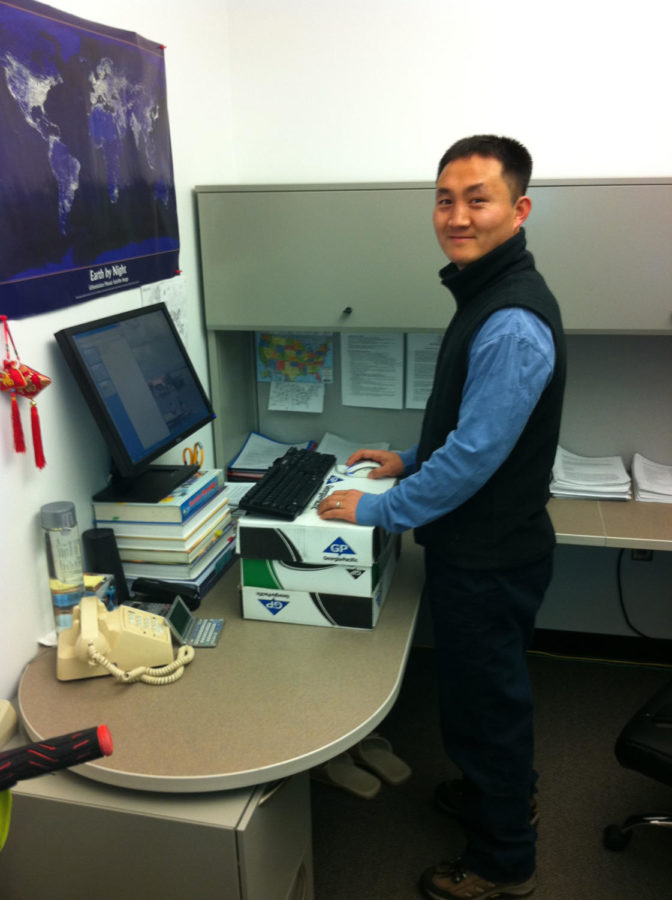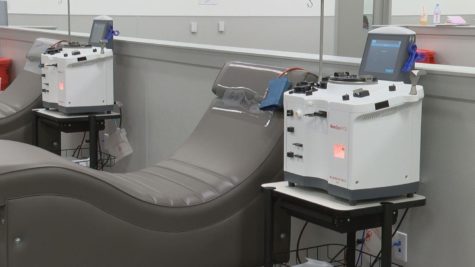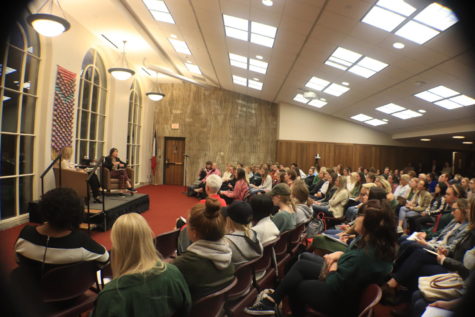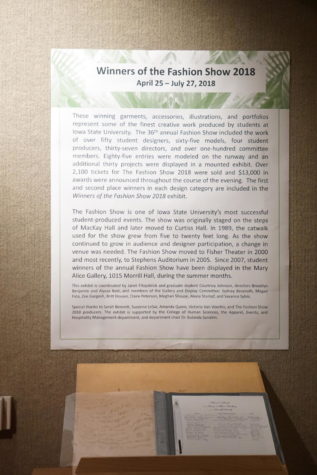Alternative desks offer health benefits
Duck-Chul Lee, assistant professor of kinesiology, displays a standing desk, which has proven to have health benefits.
November 18, 2015
Kinesiology professors are practicing what they preach by using alternative desks in their offices. Alternative desks, specifically standing and treadmill desks, provide a variety of health benefits by decreasing the amount of time people spend sitting while working or studying.
According to the American Academy of Family Physicians, studies have proven a correlation between sitting for long periods of time — more than one hour at a time — and an increased risk for various health complications such as obesity, cardiovascular disease and even death.
Gregory Welk, professor of kinesiology, and Duck-Chul Lee, assistant professor of kinesiology, both use alternative desks and recommend students do the same.
Lee started using a standing desk during his postdoctoral research. Sitting and looking at the computer monitor for extended periods of time had been giving him neck and back problems, so he decided to try a standing desk. After switching, he said he felt great and noticed his pain had decreased.
Most college students are advised to spend two to three hours studying for each hour that they spend in class. If that time is primarily spent sitting, the health risks could be dire. Even if students exercise regularly, the time spent sitting will still have negative effects, according to the American Academy of Family Physicians.
Lee alternates between standing and sitting throughout the day, which reduces the risks of sitting but also helps avoid the risks of standing too much. The risks of standing too much include an increased chance of varicose veins and spinal chord compression.
Treadmill desks, the other popular type of alternative desks, are even more beneficial than standing desks in improving certain physiological health outcomes. Lowering cholesterol is an example of one outcome, according to a study published by Preventive Medicine.
Treadmill desks are beneficial because they not only reduce sedentary time but also allow individuals to perform low-level intensity exercise while completing their work. This does pose risks, however, such as the risk of falling while walking and working.
Two treadmill desks, also known as TrekDesks, are available for students to use on campus. The desks are located in the Forker undergraduate lounge and in the underground of the Memorial Union.
Welk and Lee both said they hope to add more alternative desks on campus in the future. A meeting recently took place within the kinesiology department that included a discussion about incorporating standing desks in classrooms and conference rooms.
Using alternative desks is a growing trend, and both professors agree that Iowa State would benefit by joining the movement and providing more of these desks to students and faculty.
Welk has had students experiment with standing in class while discussing and working. He also has had students brainstorm creative ways to incorporate standing in the classroom setting. The student feedback of the integration of standing was positive, Welk said.
Welk and Lee recommend incorporating alternative desks in everyday life to experience the benefits.
“You are not constrained to one spot [when you use one],” Welk said. “You can move your feet, shift your balance — it feels liberating once you try it. Flip your routine, make standing your norm.”

















